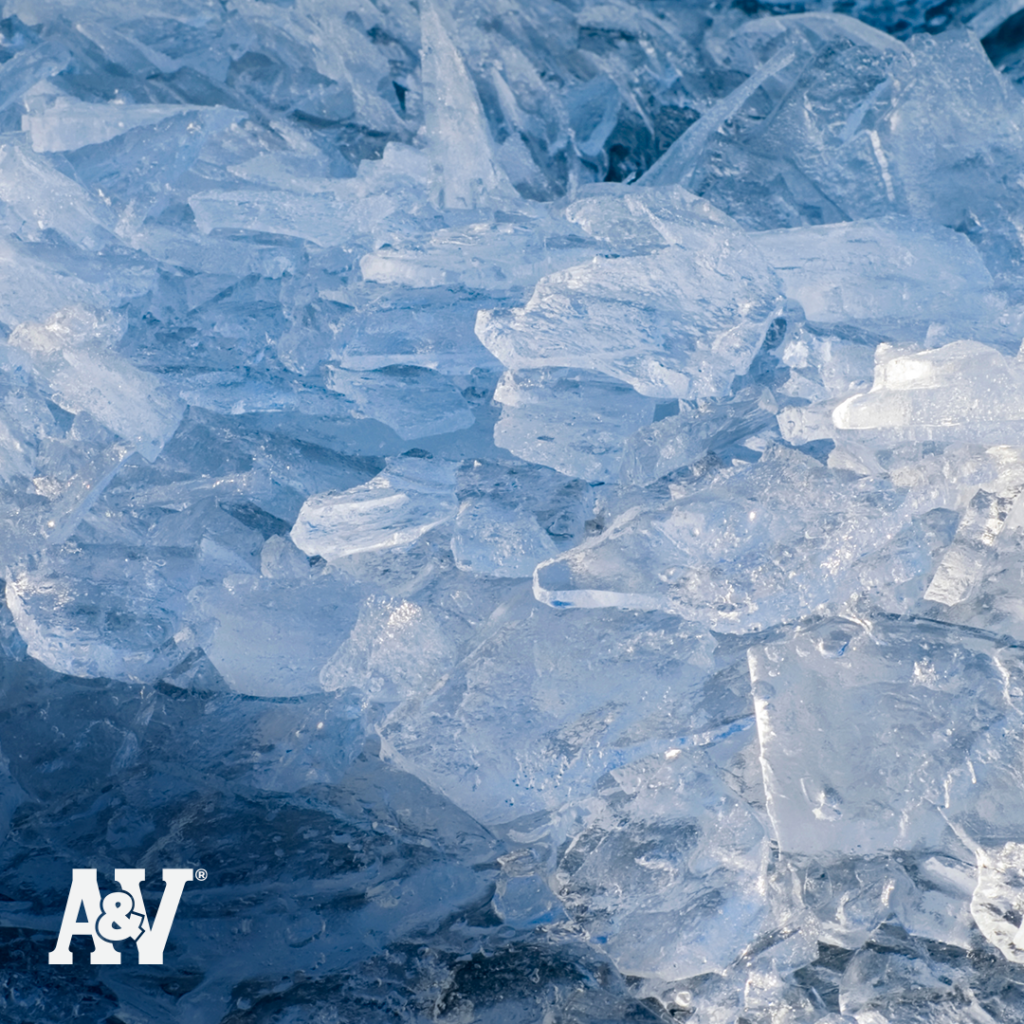In large cubes, spheres, frappé and even flakes, there are many different types of ices that surround the food and construction industry and although some processes may be somewhat similar in manufacturing, not all have the same advantages for your business.
Classic ices are commonly used for quick drink coolers and some exquisite cocktails. However, Cracked Ice or Flake Ice are leading the way in the large-scale refrigeration industry.

The most common has been Cracked Ice or Flake Ice, which has many more advantages for the commercial industry, and is the best alternative for fish and seafood preservation, vegetable processing, and even for the construction industry.
It maintains unique properties that provide greater cooling efficiency than any other type of ice, in addition to maintaining the cold chain and prolonging the shelf life of products, especially those that are perishable.
For example, for the fish and seafood trade, fragmented ice is often used in processes such as:
- Preserving maximum freshness of fish,
- Maintaining the temperature of fish on ships,
- Cooling fish for distribution and transport,
- Freezing of display cases for wholesale and retail distribution.
It’s great attraction also lies in its particular shape because it cushions the seafood against damage. Its flat shape does not create indentations in perishable seafood.
And the advantages continue far beyond the food world.
Cracked Ice or Flake Ice high durability and its ability to cover more surface area with less quantity are important aspects in industrial processes because it offers: greater product protection, faster cooling and is much more cost-effective to produce.
Cracked Ice or Flake Ice has been preferred for the construction industry because it allows cooling the concrete, reducing the heat generated during the curing process of this component.
In this industry, it is usually used in processes such as:
- Concrete cooling for mass pouring projects,
- Concrete temperature regulation,
- Temporary storage.
Concrete cools to reduce heat that can compromise the strength and integrity of a structure. If maintained at the proper temperature it allows projects to be structurally sound and eliminates costly downtime.
How do we get to shaved ice?
You might think that ice making involves steps as simple as water and a lot of cold, but when it comes to industrial processes you have to think big.
This is where A&V Refrigeration machines take the lead. They produce between 2,000 pounds (909 kg) and 40,000 pounds (18,181 kg) of fragmented hard ice in 24 hours. To do this, you need maximum efficiency processes for fast ice production that best suits each customer’s needs.
They have tubes, frames, panels and ice cutter made entirely of stainless steel (304 made in the USA), and each of these components allows ice to be formed on both the inside and outside walls of the evaporator for maximum efficiency.
The water used for its manufacture circulates continuously inside and outside the cylinders where it comes into contact with the stainless steel. It also circulates through a water pump installed in the storage tank, where the water level is maintained by a float valve.
When the desired thickness is reached, a defrost cycle is used to release the ice from the cylinders, where hot gas is produced to loosen the ice from the evaporator surfaces and make it fall by gravity onto the cutters, to be sent to storage.
The manufacture of Cracked Ice or Flake Ice has become an arduous process in which every part of A&V Refrigeration’s machines takes center stage to create products of maximum efficiency. These are the details that, for more than 30 years, have made us the
